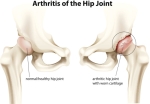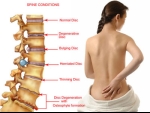Home »
Blog » Pain Management
| Stem Cell, PRP, Acupuncture in Queens & Long Island, New York
Pain Management | Stem Cell, PRP, Acupuncture in Queens & Long Island, New York
The cause of osteoarthritis is now thought to be a combination of these factors: 1. Genetics - Your genes may be involved in the development of osteoarthritis, though researchers are still working to fully understand this connection. It may be that you have an abnormality in the makeup of your cartilage, or that your bones fit together abnormally at the joint.
Read more
Dysfunction in your cervical spine can lead to pain that radiates through your shoulders and down your arms. If this is the case for you, an injection of cortisone steroid can be a great short-term solution. Read on for a step-by-step overview of this common procedure. In your cervical spine (neck), there is a sac called the dura that contains your nerve roots, cerebrospinal fluid, your spinal cord, and nerves.
Read more
There are a number of potential symptoms of spinal stenosis, and one's specific symptoms are mainly determined by the location and severity of the stenosis in the spine.
Read more
Osteoarthritis (OA) is a chronic degenerative disease. It causes damage to your joints, including those in your: hands and fingers, knees, hips, lower back, neck, Treatment for OA focus on managing your symptoms. The disease can’t be reversed. The progressive degeneration of OA has been classified into four stages. The first stage, with no joint damage, is called Stage 0. Stage 4 is the most advanced and severe stage of OA. Here are some signs of stage 4 OA.
Read more
Most cases of lumbar herniated disc symptoms resolve on their own within six weeks, so patients are often advised to start with non-surgical treatments. However, this can vary with the nature and severity of symptoms.
Read more
In the medical field, stenosis means the abnormal narrowing of a body channel. When combined with the word spinal, it defines a narrowing of the bone channel occupied by the spinal nerves or the spinal cord. Some people are born with a congenital form, but most develop spinal stenosis as part of the degenerative cascade. A few do not feel any effects of the narrowing, but as part of the aging process, most people will eventually notice radiating pain, weakness, and/or numbness secondary to the compression of the nerves or spinal cord.
Read more
Hip osteoarthritis (OA) causes the cartilage that cushions your joints to be lost, resulting in pain and stiffness. Your doctor will be able to provide recommendations based on your condition. The treatments range from conservative to invasive. Conservative treatments include exercising and stretching. Invasive treatments include hip replacement surgery. All these treatments can help manage pain and improve mobility.
Read more
People showing symptoms of a lumbar herniated disc can expect the doctor to conduct a detailed interview and perform a thorough physical exam. Questions about when and how the pain started are typical, particularly if there was any type of traumatic injury.
Read more
Compared to other medical conditions, there are relatively few standardized approaches to diagnosis and treatment of back problems. Spine specialists from various areas of expertise (such as physical medicine and rehabilitation, chiropractic, osteopathic medicine, physical therapy, and surgery) will often disagree on the diagnosis and most appropriate treatment plan for back pain and back problems, and specialists within a discipline will also frequently have different opinions. A few diagnoses for back pain as a result of back a back problem are relatively straightforward (such as a spinal tumor, infection, or fracture) and there is generally more consensus for diagnosis and treatment of these back problems.
Read more
Arthritis is a group of painful and degenerative conditions marked by inflammation in the joints that causes stiffness and pain. Osteoarthritis, the most common type of arthritis, gets worse with age and is caused by wear and tear over the years. Rheumatoid arthritis is caused by the immune system attacking the joints as if they were foreign tissues. Because of this, rheumatoid arthritis is classified as an autoimmune disease.
Read more
Love this Post? Spread the World






















